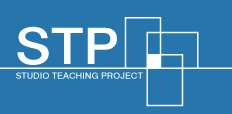
Recommendations
Complementing the STP Key Findings, the following recommendations identify issues and actions for consideration by government, government agencies, education institutions, schools and departments, individual Art, Architecture and Design academics and their professions.
-
Government and institutions should recognise the essential characteristics and role of studio teaching within the disciplines of Art, Architecture and Design. Funding models should be reviewed and investigated to determine ways to more adequately resource studio in Art, Architecture and Design (Bradley 2008).
-
Government and institutions should recognise that studio subjects promote effective use of materials, technical skills and equipment, diverse skills development, concrete knowledge and tacit knowledge; integrate studio practice and discipline theory and history; and promote work integrated learning - developing graduate skills and attributes appropriate to the disciplines. Through this learning Art, Architecture and Design graduates establish discipline-specific and highly valuable transferable skill sets.
-
Schools and departments should consider adopting the benchmark principles for quality studio teaching in Art, Architecture and Design, as detailed in Chapter Four of this report.
-
Studio academics should ensure that studio includes collaborative activities such as group projects, peer critiques, discussion and skill sharing to prepare students for industry/professional practice that is increasingly reliant on effective communication among team members, across disciplines, and with project associates.
-
Studio academics should ensure that studio class structures recognise that smaller studio groups allow for greater interaction among staff and students, and between students, and help to create a positive studio environment that is conducive to experimentation and risk-taking, leading to best outcomes for student engagement and learning.
-
Schools and departments should facilitate effective and high level interaction between staff and students to achieve quality learning outcomes and experiences in studio - provision of extended periods of time in studio with peers and staff members, non-linear, time intensive and reiterative practices engaging in studio use over time beyond the limitations of formal structure.
-
Assessment is a key element in the mode of studio learning, and studio teachers and curriculum designers should use the STP assessment indicators presented in Chapter Five of this report as a means of contributing to advancing the overall student learning experience in studio.
-
Institutions, schools and departments should recognise that their staff need to encompass, in aggregate, a mix of industry/professional and academic skills in order to meet the Art, Architecture and Design discipline learning objectives.
-
Studio academics should ensure that studio content builds connections with the external clients and industry/professional experts to better integrate professional practice experience and studio teaching.
-
Schools and departments should encourage initiatives that recognise the differences and potential synergies between industry/professional practice and academic research, and where appropriate develop collaborative projects within academic research structures and processes.
-
Institutions, schools and departments are encouraged to provide assistance in making workloads more manageable, staff development a reality, and recruitment and retention of new staff more effective.
-
Institutions are encouraged to provide assistance for Art, Architecture and Design schools to identify and implement strategies that will make succession planning a more viable priority.
-
Institutions, schools and departments should ensure good and well maintained working space, facilities and other resources (including flexible premises appropriate to disciplines, projects and level of study; access to appropriately equipped workshops and technical support; and ICT hard and software appropriate to discipline and industry standards).
-
Where possible, Art, Architecture and Design professions and representative academic bodies should require that studio space and equipment standards be included among accreditation/benchmarking criteria as a national measure for each discipline.
-
Representative academic bodies, schools and departments, with institutional support, should establish guidelines and benchmarks for access to studio space for student use (especially outside normal working hours and in terms of occupational health and safety provisions) and ensure they are documented and promoted.
-
Institutions, schools and departments should develop more efficient models for delivery of Fine Arts studios, including streamlined course structures, fewer individual degrees, and simplified major streams. Standardised nomenclature should also be considered. (While this recommendation relates mostly to Fine Arts/Art, it may have relevance to some awards structures in the Architecture and Design disciplines).
-
Institutions, schools and departments are encouraged to assist Art, Architecture and Design academics to find a viable balance between teaching and research workloads and productivity - especially in the context of the Excellence in Research for Australia (ERA) implementation. Making additional time for academic research will require effective prioritisation of teaching and learning and research practices and processes.
-
Institutions, schools and departments should identify and implement strategies to up-skill Art, Architecture and Design studio academics in research methodologies and writing about and publishing on their academic research to complement practical outputs.
-
Institutions, schools and departments should consider funding incentives as a means to improve research performance of Art, Architecture and Design studio teachers.
-
Art, Architecture and Design curriculum developers are encouraged to consider ways to more efficiently and effectively utilise the range of learning opportunities made available through contemporary study options, from Vocational Education and Training (VET) certificates to doctorates (Bradley 2008).
-
Institutions, schools and departments should establish clear and consistent articulation agreements between education providers, and courses that recognise the types of learning opportunity distinctive to Vocational Education and Training (VET) and Higher Education sectors that together contribute to the mix of learning skills needed in graduates. VET and Higher Education sectors should consider the potential of joint award programs, subjects and projects (Bradley 2008).
-
Institutions, schools and departments should establish degree and subject entry requirements that recognise technical subjects and skills relevant to industry/professional practice as well as standard (academic) tertiary entry ranking indicators.



